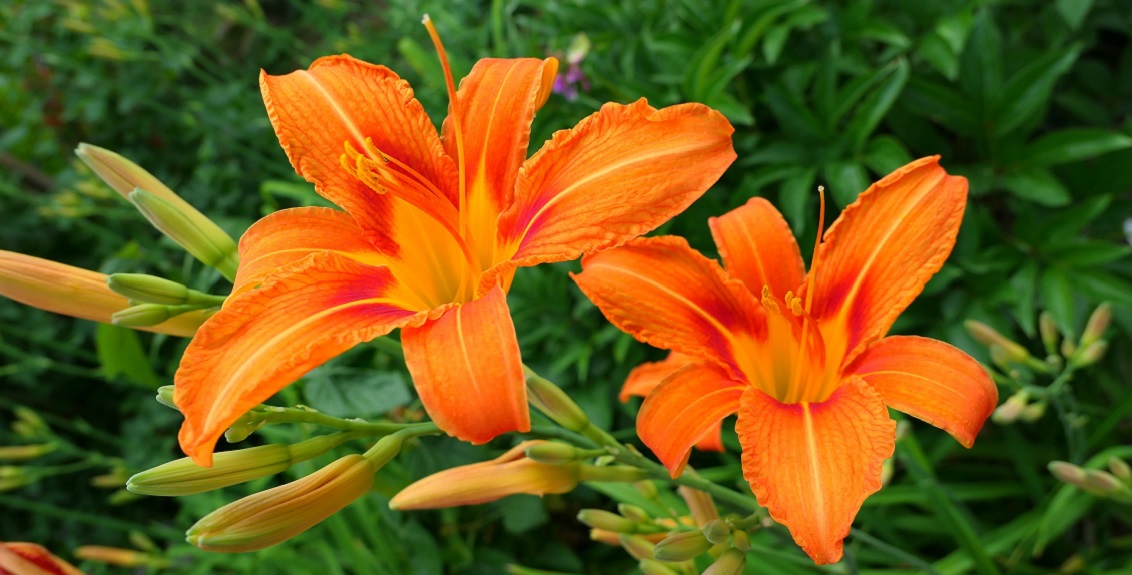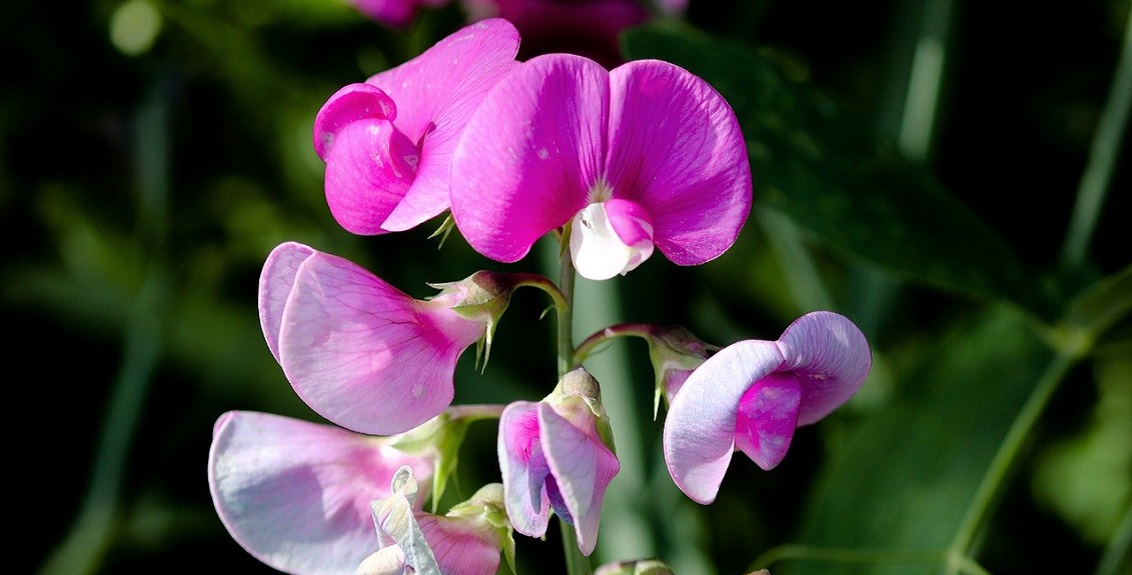Jobs for July
Summer is in full swing and most plants are in the ground now. You should be harvesting salad crops, peas and potatoes by now with some strawberries and other soft fruit for pudding. If it ever stops raining there is plenty to do!
Flower Garden/In the Greenhouse
Flower Garden
- Deadhead flowers not wanted for seed
- Lift and store tulip and hyacinth bulbs
- Collect and sow seed from foxgloves
- Take cuttings from pinks (Dianthus)
- Prune Philadelphus after flowering, removing stems carrying old flowers.Cut out very weak stems and some of the oldest wood
- Feed dahlias with a liquid fertiliser and ensure plants are well watered. Tie to supports as stems develop
- Remove rose suckers – excavate the soil so you can cut them back as far as possible
- Spray roses regularly to prevent pests and diseases getting hold
- Prune the long sideshoots on wisteria, cutting them all back to a length of about 20cm
- Spray gladioli regularly with an insecticide to control thrips that can damage leaves and flower spikes
- Lift, divide and replant healthy portions of flag iris rhizomes into freshly prepared soil. Reduce their leaves by half to prevent wind rock
- Water sweet peas and give a liquid feed. Pick flowers or deadhead regularly
- Start cyclamen plants into growth
- Continue feeding plants
- Thin or prick out seedling of annuals, biennials and perennials sown last month
- Sow winter flowering pansies
- Plant late flowering bulbs
In the Greenhouse
- Take cuttings of zonal and regal pelargoniums, and pot up rooted cuttings taken earlier
- Train the main stem of cucumber plants up a wire to the roof of your greenhouse. Pinch out sideshoots two leaves after a flower or fruit
- Water plants in pots and grow bags with tepid water, if possible. Try leaving a few full cans of water in the greenhouse to warm up
- Send off for biological pest controls for whitefly and red spider mite
- Propagate lilies from bulb scales, digging bulbs from the garden to remove a few healthy scales, then replanting again. Small bulblets will form at the base of each scale within a few weeks

Veggie Garden/General Advice
Veggie Garden
- Gather the last of the peas and clear the ground
- Sow late Carrots
- Water beans and pick them regularly
- Transplant brassica seedlings from the seedbed to their final positions, spacing them about 30-45cm apart. Brussels sprouts need about 75cm
- Plant out leek seedlings from their seedbed once they are pencil thick, planting them 15cm apart in rows, with about 30cm between rows
- Place collars of card or carpet underlay around the stem base of newly transplanted brassicas to keep cabbage root fly away
- Pick off malformed or withered apples and any showing signs of pest or disease attack
- Keep fruit bushes covered with netting, then weave a cane through the bottom edge and peg it down to stop birds crawling underneath
- Make the final pickings of rhubarb and cut any flower spikes that form right down to their base
- Lift early potatoes and shallots as they mature
- Sow swedes and cover with fleece to prevent seedlings being attacked by flea beetle
- Sow seeds of vegetables, including beetroot, cabbage, endive, kohl rabi, lettuce, radish, rocket, spinach and turnips
- Turn your attention to autumn crops and sow things like Raddichio, Pak Choi, Mizuna and Endive
- Keep cutting Sweet Peas to encourage more flowers
- Harvest Shallots, Onions and Garlic as their leaves go brown
- Cut off any Potato leaves affected by blight and burn
- Feed Tomatoes every other week with high potash liquid feed
- Cut off Strawberry runners as they appear (unless you want to make new plants)
- Plant a second bed of Sweetcorn in between your onions – once the onions are gone the Sweetcorn will have enough room to grow
- Buy some ‘ready-grown’ lettuce plants to fill gaps where needed
General Advice
- Top up the water level in garden ponds when it starts getting low in summer
- Push canes in around tall plants like gladioli and lilies and tie them to the stems for support
- Place eye protectors on the tops of all garden canes
- Water hanging baskets and containers daily, ensuring they never dry out
- Empty compost bins when full, mixing up the compost and then re-filling. Sprinkle the contents with a biological activator as you go
- Apply weedkillers to paths and drives
- Give houseplants a weekly liquid feed
- Compost your kitchen and garden waste
- Prune spring flowering shrubs. Don’t let your physocarpus or other spring-flowering shrubs become overgrown, woody and thin on flowers. Pruning out the stems that have bloomed this spring will keep your plants at a manageable size and will guarantee an explosion of flowers the next year

